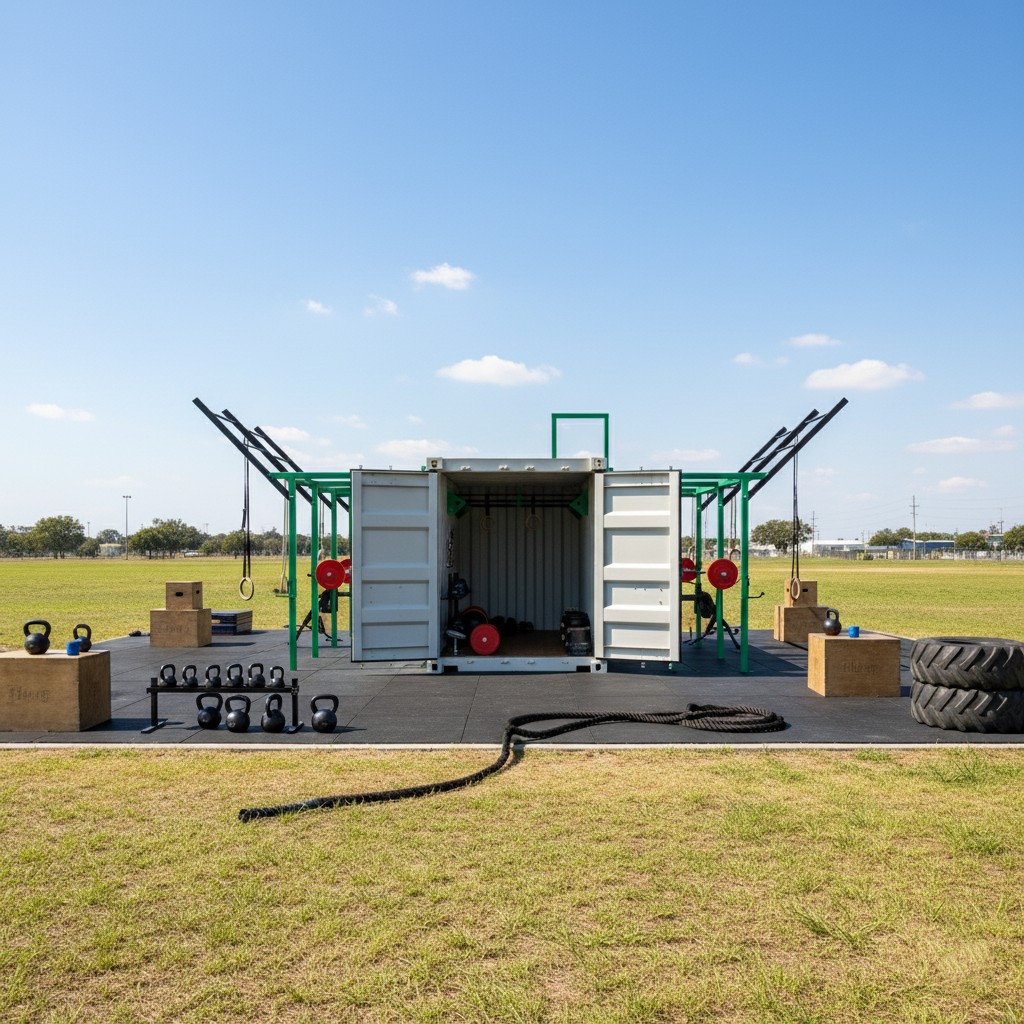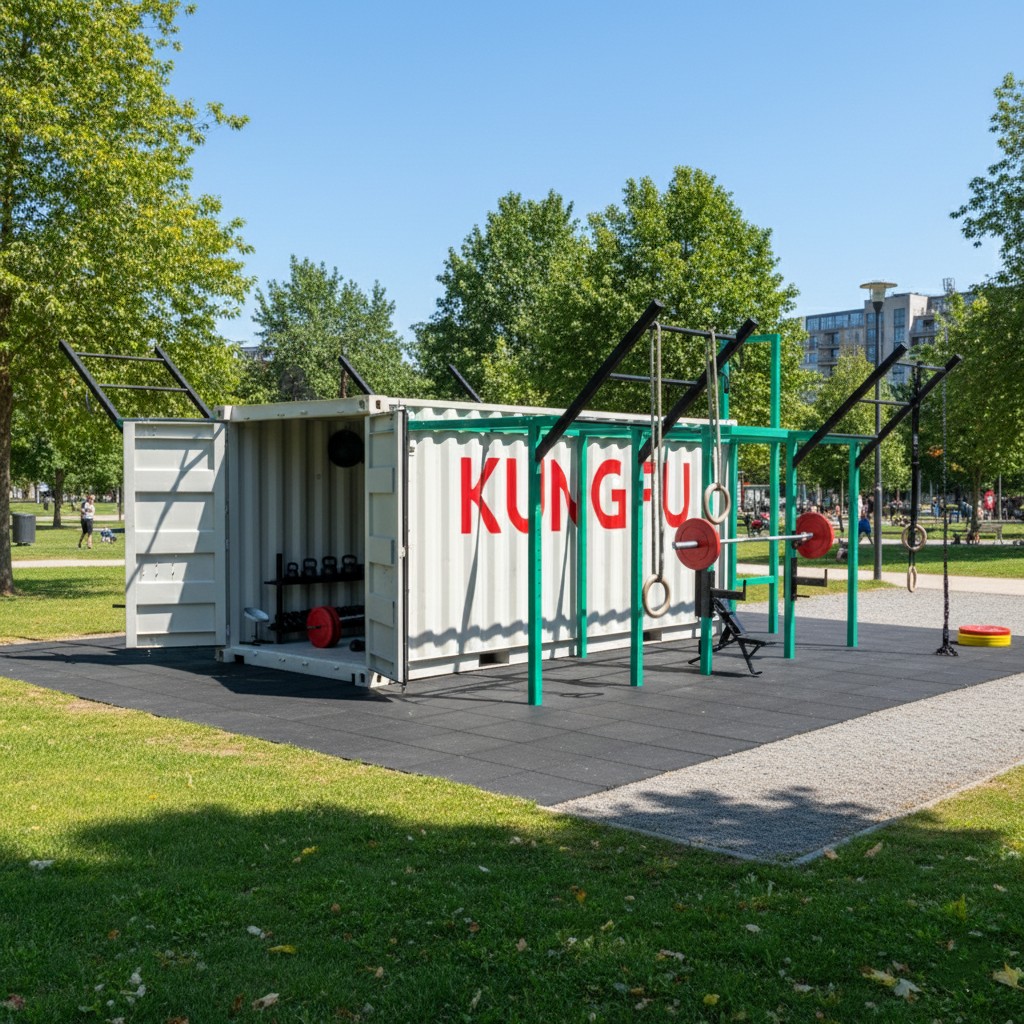
Introduction
Let's be honest. The fitness market is saturated. Your clients are constantly looking for an edge—a way to be different, a way to be smarter with their money, and a way to reach customers in places a traditional gym never could. So, what's the answer? It’s often not a new workout trend; it's a new kind of workout space.
The "Why": The Business Case for the Container Gym
Before you can sell the "what," you have to nail the "why." Here’s why a shipping container gym is a genius move for your clients.
The Superpower: It Can Go Anywhere. Literally.
This is the biggest selling point. You can deliver a fully-functional, high-end training facility on the back of a truck and have it running in hours. Think about the markets this unlocks:
- Military & First Responders: Imagine dropping a complete strength and conditioning facility on a temporary base.This is a real solution for keeping personnel mission-ready.
- Remote Industries: Oil rigs, mining camps, major construction sites. These industries struggle with employee wellness and retention. A container gym is a rugged, self-contained solution to that problem.
- Events & Pop-Ups: Your clients can create a mobile fitness experience for festivals or corporate events, generating huge marketing buzz and revenue.
The Bottom Line: It's Dramatically Cheaper
Building a traditional gym is a nightmare of permits, contractors, and delays. A container gym sidesteps all of that. The cost is the box, the custom fit-out, and the equipment. We're talking a potential 50-70% saving compared to brick-and-mortar. This massively lowers the financial risk for an entrepreneur trying to get their first facility off the ground.
The "Wow" Factor: It's a Marketing Machine
Let's face it, a shipping container gym is just plain cool. It's different. It's rugged. It's the kind of unique space that people want to take pictures of and post online. For a personal trainer, a corporation, or a small town, the gym itself becomes a landmark and a powerful, self-promoting marketing tool.
It's a Fortress
When you lock the doors, the equipment is incredibly secure. This makes them perfect for outdoor or semi-public locations where you can't have staff watching it 24/7.
How to Design a Container Gym
Here's the most important concept you need to convey to your clients: You don't train in the container; you train on and around it. The inside is for storage. The outside is the gym floor.
The Backbone: A Fold-Out Rig System
The exterior walls are the most valuable real estate. This is where you create the workout space with a custom-built, folding rig.
- The Design: The rig's squat stations and pull-up bars are on heavy-duty hinges. For transport or overnight security, everything folds flat against the container. When it's time to train, it folds out and locks into place with pins.
- The Functionality: A smart rig on a 20-foot container can easily give you 2-4 squat stations and multiple pull-up bars. You can add integrated dip bars, wall ball targets—you name it.
- The Non-Negotiable Detail: Weatherproofing: You have to get this right. The steel for the rig must be galvanized before it's powder-coated. If not, it will rust from the inside out. All the nuts and bolts need to be stainless steel. This is a critical quality point that protects your client's investment.

The Interior: The Ultimate Storage Locker
The inside of the container is too narrow to safely swing a barbell. Its real job is to be the world's most organized storage unit.
- Go Vertical: Everything needs a home, and it needs to be on the walls. We're talking custom, wall-mounted racks for barbells, bumper plates, kettlebells, and dumbbells. This keeps the floor
- Protect the Floor: The container's original wood floor needs to be covered with heavy-duty rubber gym flooring. clear for easy access.
The "Gym-in-a-Box" Equipment Package
- Custom, Wall-Mounted Racks: Every piece of equipment needs a home. This means custom, wall-mounted storage solutions that use vertical space.
- Barbell Holders: Vertical or horizontal racks to keep barbells off the floor.
- Bumper Plate Racks: Wall-mounted posts to store plates neatly.
- Kettlebell and Dumbbell Shelves: Heavy-duty shelving, secured to the container's structural beams.
- The Foundation: Heavy-Duty Flooring: The container's original wood floor must be protected. The entire interior should be lined with thick, heavy-duty rubber gym flooring to prevent damage from dropped weights.
This is a New Market, Not Just a New Product
The shipping container gym is the perfect answer for clients who need an affordable, unique, and flexible workout space. It's a problem solver. This is a chance to get ahead of the curve. You're no longer just shipping out individual products.
Let's Build the Solution Your Clients Are Looking For
You've got the clients who need innovative solutions. We've got the expertise in building the rugged, custom equipment to make it happen. Let's work together to bring these container gyms to your market.
Contact us to start the conversation and get a quote for a complete package.
Email: kungfu@rzkungfu.com
Frequently Asked Questions (FAQ)
Q1: What's the best container size to start with?
The 20-foot container is the sweet spot. It's easy to ship, affordable, and you can build a rig on it that can handle a class of 6-10 people. It's the most popular model for a reason.
Q2: How many people can actually train at one of these at the same time?
With a folding rig on both sides of a 20-foot container, you can comfortably run a group of 6-10 people through a station-based workout.
Q3: What's the biggest mistake people make when designing one?
They try to make the inside the main workout area. It's a recipe for a cramped, dangerous mess. The winning formula is: storage on the inside, training on the outside.
